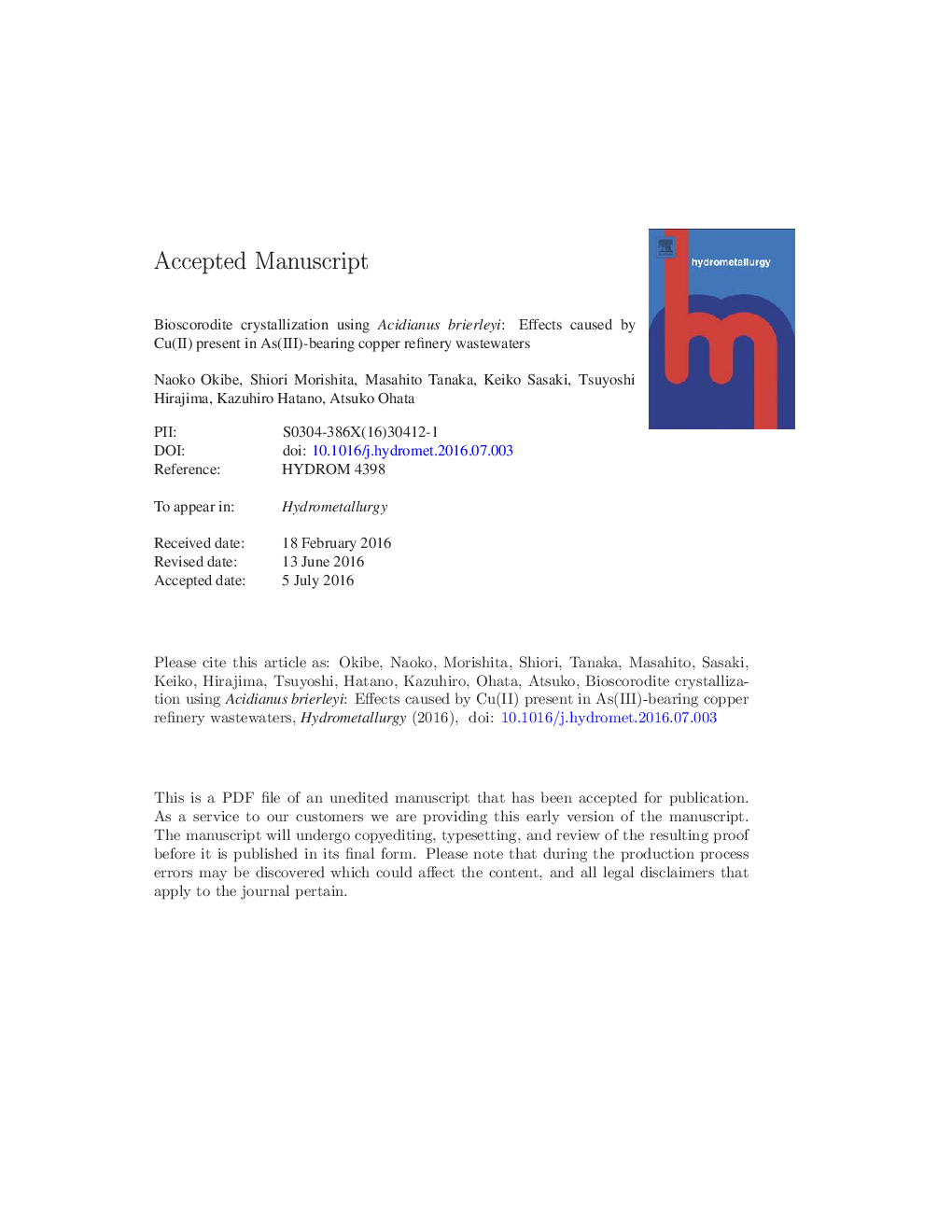| Article ID | Journal | Published Year | Pages | File Type |
|---|---|---|---|---|
| 4769090 | Hydrometallurgy | 2017 | 29 Pages |
Abstract
This study investigated the effect caused by Cu(II) in synthetic As(III)-bearing copper refinery wastewaters, on microbial scorodite (FeAsO4·2H2O) formation using the thermo-acidophilic Fe(II)- and As(III)-oxidizing archaeon, Acidianus brierleyi. Microbial Fe(II) oxidation and cell growth became only marginal in the presence of 8-16 mM Cu(II), with its As(III) oxidation ability being severely inhibited. Consequently, scorodite formation was disabled by Cu(II) addition. However, feeding scorodite seed crystals readily alleviated Fe(II)- and As(III)-oxidation ability of Ac. brierleyi at 8 mM Cu(II), forming crystalline scorodite within 24 days in shake flasks. Zeta potential analysis indicated cell attachment to the scorodite seed crystal surface, implying its role in providing the immediate support for microbial colonization and enabling more robust microbial reactions. Most of Cu(II) was neither adsorbed nor co-precipitated and remained in the solution phase during scorodite crystallization, with or without the presence of seed crystals. Addition of seed crystals at 0.015, 0.03, 0.075 and 0.15% resulted in As immobilization of 96, 97, 97 and 98%, respectively, by day 24. This study demonstrated that despite of its inhibitory effect on Ac. brierleyi cells, scorodite can still be crystallized in the presence of Cu(II) by feeding scorodite seeds from synthetic copper refinery As(III)-bearing wastewaters.
Related Topics
Physical Sciences and Engineering
Chemical Engineering
Chemical Engineering (General)
Authors
Naoko Okibe, Shiori Morishita, Masahito Tanaka, Keiko Sasaki, Tsuyoshi Hirajima, Kazuhiro Hatano, Atsuko Ohata,
